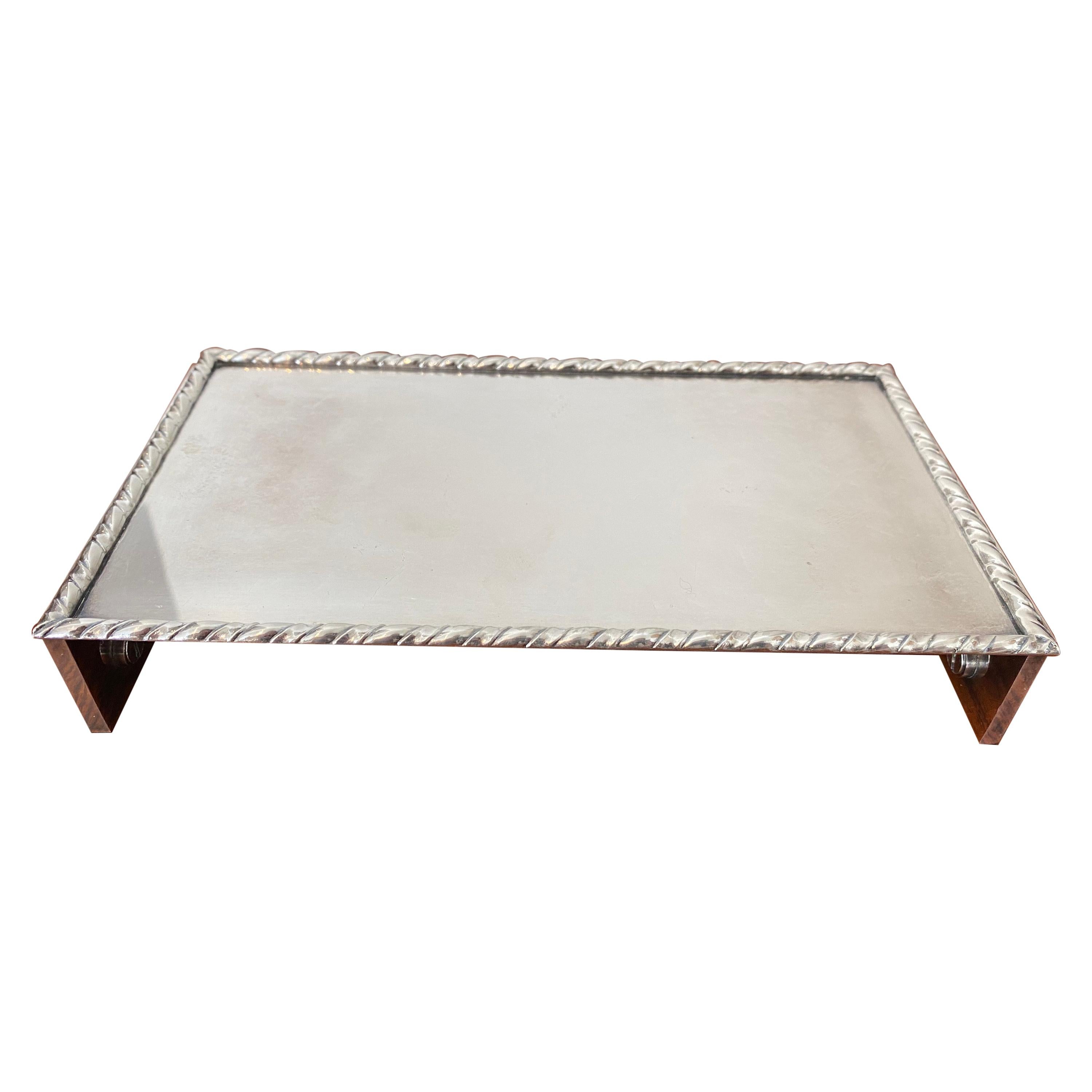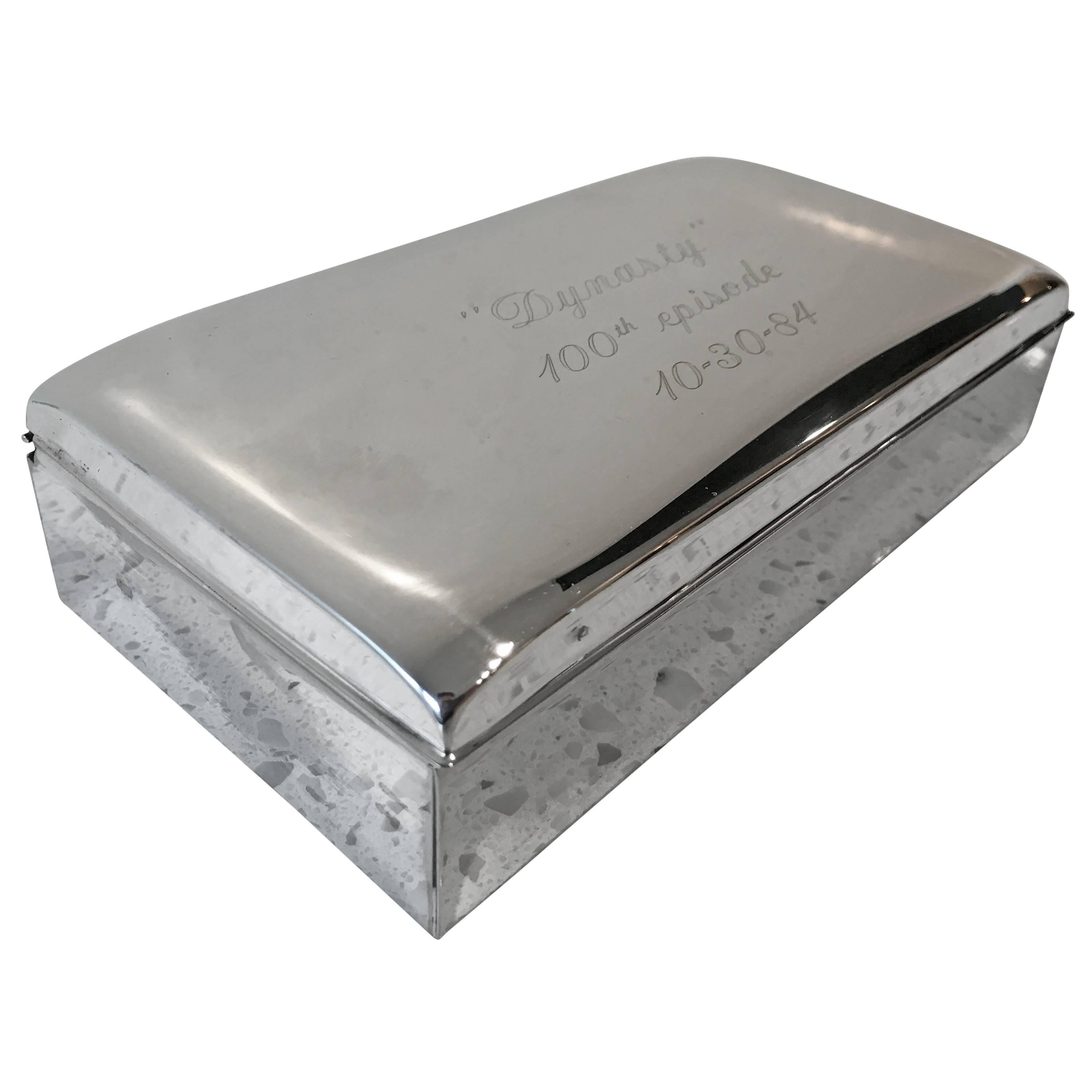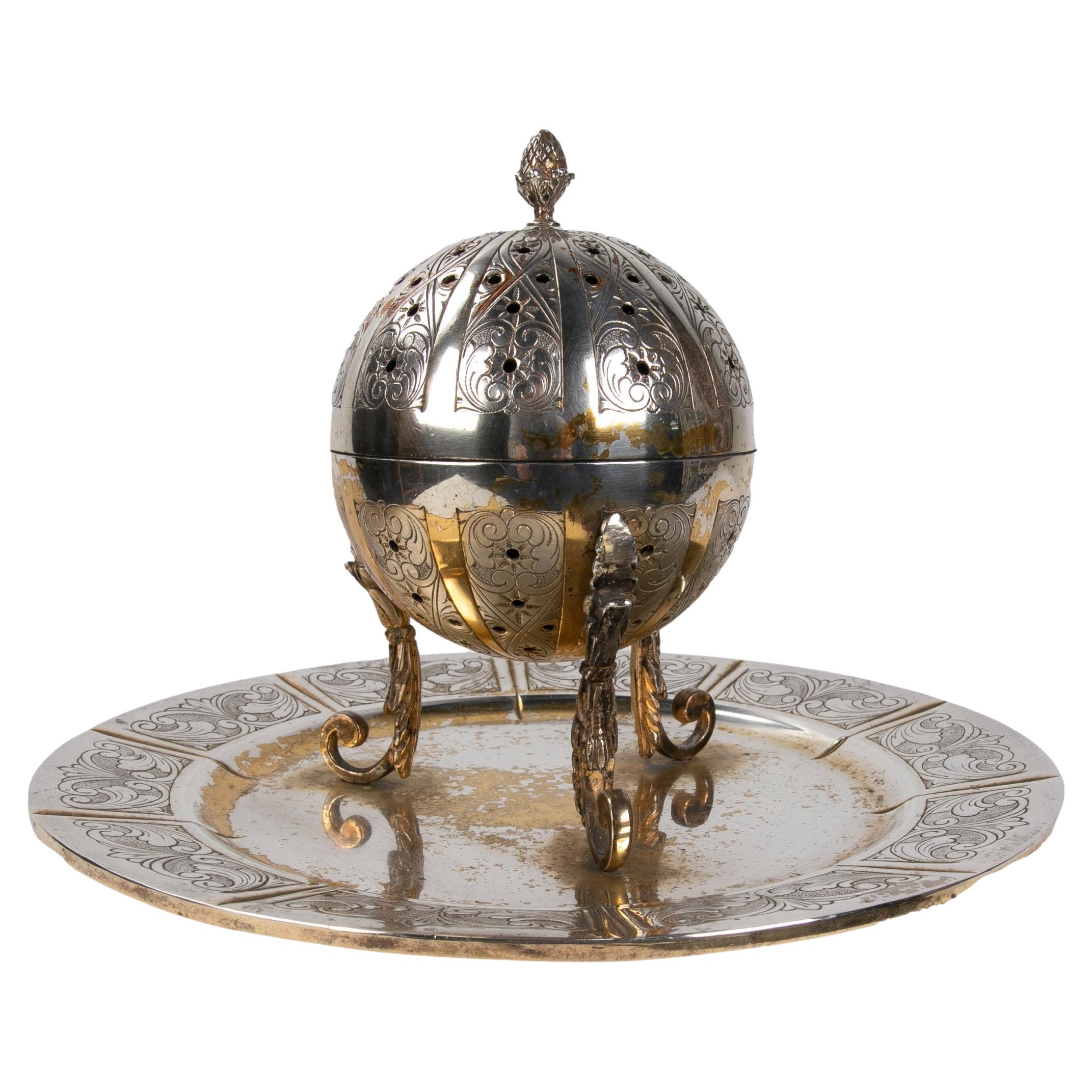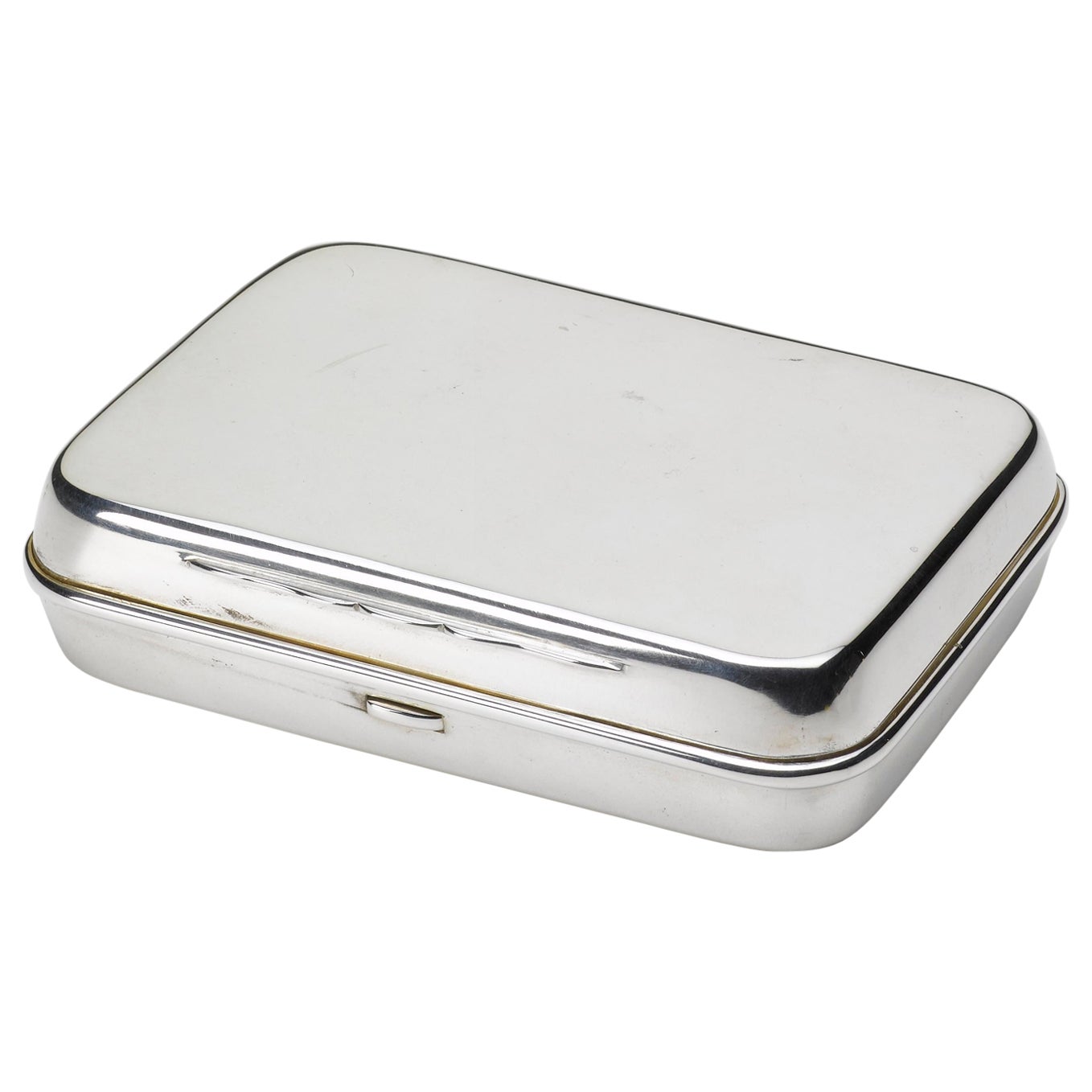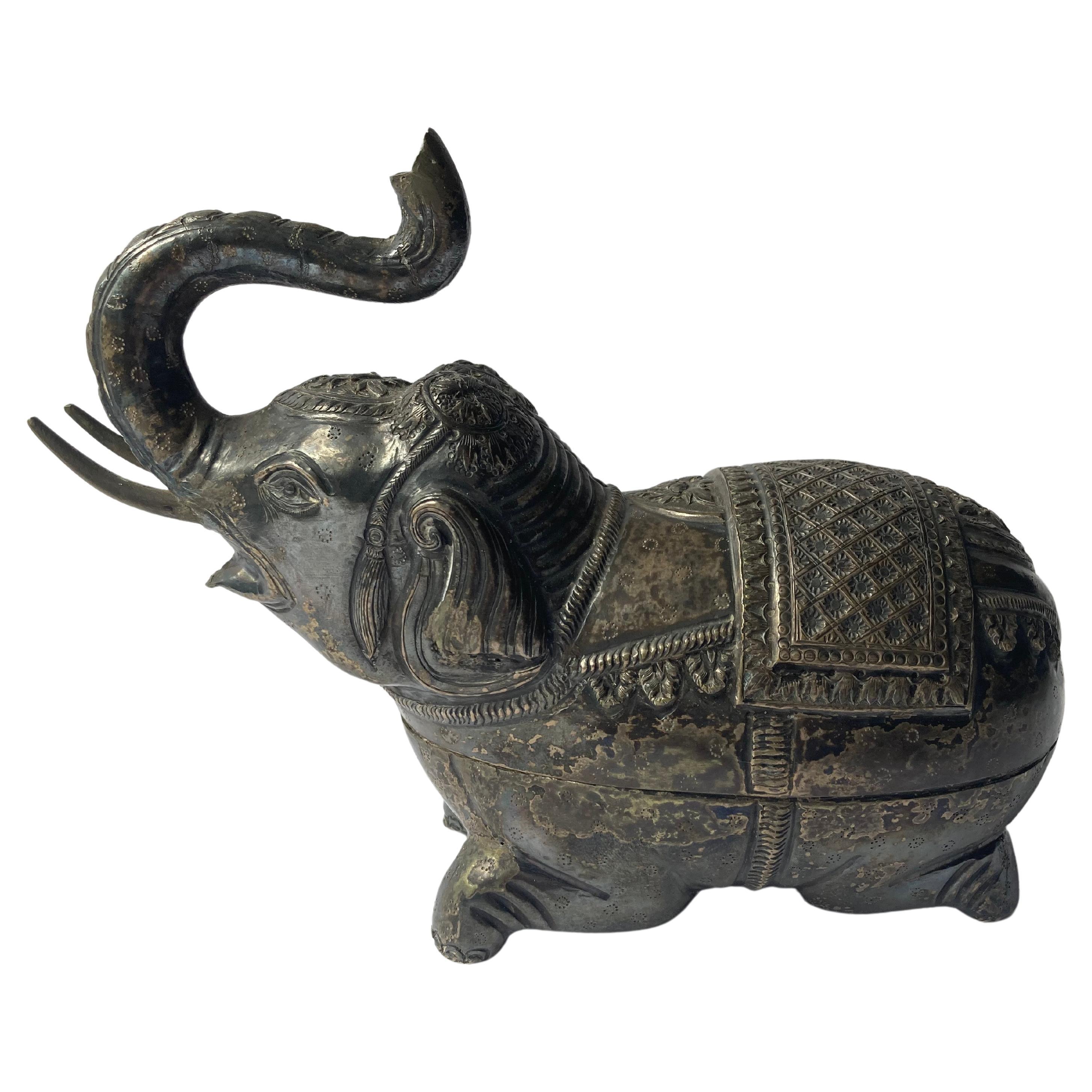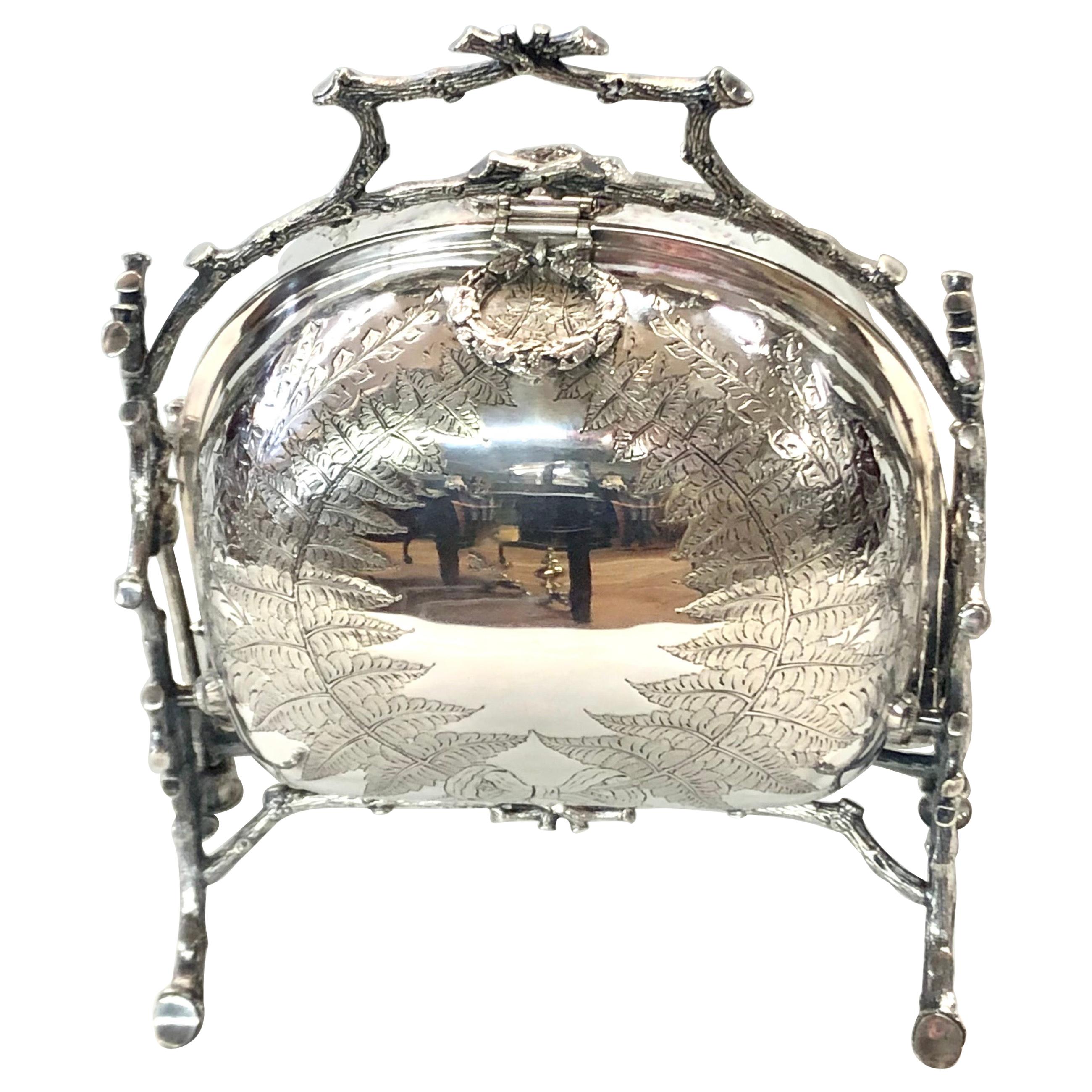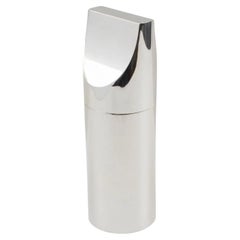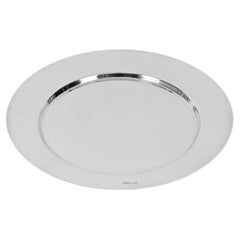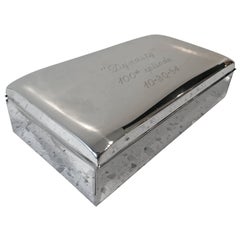
Cleto Munari 1980s Modernist Silver Plate Decorative Box
View Similar Items
Want more images or videos?
Request additional images or videos from the seller
1 of 8
Cleto Munari 1980s Modernist Silver Plate Decorative Box
About the Item
- Creator:Cleto Munari (Designer)
- Dimensions:Height: 1.19 in (3 cm)Width: 9.06 in (23 cm)Depth: 3.94 in (10 cm)
- Style:Modern (Of the Period)
- Materials and Techniques:Silver Plate,Velvet
- Place of Origin:
- Period:1980-1989
- Date of Manufacture:circa 1980
- Condition:Wear consistent with age and use.
- Seller Location:Atlanta, GA
- Reference Number:Seller: 2R2131stDibs: LU1632211563773
About the Seller
5.0
Platinum Seller
These expertly vetted sellers are 1stDibs' most experienced sellers and are rated highest by our customers.
Established in 1995
1stDibs seller since 2015
926 sales on 1stDibs
More From This SellerView All
- Lino Sabattini, Italy Silver Plate Geometric Box, 1980sBy Lino Sabattini, Sabattini ArgenteriaLocated in Atlanta, GALino Sabattini for Sabattini Argenteria designed this elegant silver plate decorative box circa 1980. This tall-lidded box has a minimalist geometric design and can be displayed as a...Category
Late 20th Century Italian Modern Decorative Boxes
MaterialsMetal, Silver Plate
- Modernist Long and Flat Lucite Box, 1980sBy Studio Italia DesignLocated in Atlanta, GAThis expressive modernist lidded box from the 1980s is made from Lucite and features an extra long and flat rectangular shape with an intricate clear and frosted geometric design. Th...Category
Vintage 1980s Italian Modern Decorative Boxes
MaterialsAcrylic, Lucite, Plexiglass
- Giuliano Bossi Silver Plate Barware Cocktail Martini Pitcher, Italy 1980sBy Ibis, Giuliano BossiLocated in Atlanta, GAItalian silver master Giuliano Bossi designed this streamlined and minimalist barware accessory for Ibis, Milano in the 1980s. The sleek and modernist d...Category
Vintage 1980s Italian Mid-Century Modern Barware
MaterialsMetal, Silver Plate
- Silver Plate and Wood Box with Agate Stone Slab Decor, Italy 1980sBy Studio Italia DesignLocated in Atlanta, GAThis lovely 1980s Italian modernist silver-plate lidded box has a design reminiscent of Gabriella Crespi's elegant production. The minimalist rectangular shape has Macassar wood side...Category
Vintage 1980s Italian Modern Decorative Boxes
MaterialsAgate, Metal, Silver Plate
- Lucite and Silver Plate Decorative Box, Italy 1970sLocated in Atlanta, GAThis elegant 1970s modernist decorative box is reminiscent of Gabriella Crespi's work. The massive geometric shape boasts a silver plate metal base and a thick crystal clear Lucite l...Category
Vintage 1970s French Mid-Century Modern Decorative Boxes
MaterialsMetal, Silver Plate
- Modernist Extra Long and Flat Silver Plate Box, 1960sBy Art de FranceLocated in Atlanta, GAThis beautiful French modernist box was crafted in the 1960s and made of silver plate metal. The minimalist and streamlined design features an extra-long and flat shape, making it an...Category
Vintage 1960s French Mid-Century Modern Decorative Boxes
MaterialsMetal, Silver Plate
You May Also Like
- Gio Ponti for Cleto Munari Modernist Silver Plated Serving Plate Italy, 1980sBy Cleto Munari, Gio PontiLocated in Roma, ITAmazing mid-century silver plate serving plate. Gio Ponti designed and signed this astonishing item for Cleto Munari in Italy during the 1980s. The flat and efficient design on two round levels, make this piece simply irresistible and iconic for midcentury lovers. This piece will smarten a midcentury living room or minimal and chromed bar. This wonderful piece is in very good condition. Dimensions (cms): Diameter - 32 Giovanni “Gio” Ponti, (Milan, November 18, 1891 - Milan, September 16, 1979), is one of the Italian masters of architecture. He was also a designer and essayist and one of the most important of the twentieth century. Other than the great architectural works which carry his unmistakable signature, he created a vast amount of work in the furniture sector. This is demonstrated in his three Milanese houses which were fully furnished in the "Ponti" style. The houses in via Randaccio, 1925, Casa Laporte in via Brin, 1926 and the last in via Dezza, in 1957 is an "expression" of his home design ideas. Gio Ponti was an Italian promoter of industrial design and introduced the idea of interior furnishing ranges produced as being a "sophisticated," economic, "democratic" and modern. Molteni&C managed a reissuing project of furniture and furnishings designed by Gio Ponti for products for these private homes and limited editions. After a long journey of research, selection and study of prototypes, the collection was exhibited at the Salone del Mobile 2012. This was thanks to the cooperation and the exclusively signed agreement of the Ponti heirs and the artistic director of Cerri & Associati Studio. Gio Ponti graduated in Architecture at the Polytechnic of Milan at the end of World War I, after he fought on the front line earning military decorations. In 1921 he married Giulia Vimercati, with whom he had four children: Lisa, Giovanna, Letizia and Giulio. In 1927 he opened a studio in Milan with the architect Emilio Lancia. From the beginning of the 1920’s until 1938 he worked with Richard-Ginori Manufactory and renewed its production. In 1928 he founded the Domus magazine with Gianni Mazzocchi. In 1933 he became the artistic director of Fontana Arte which was another success after the one he obtained with Richard-Ginori. In the 1930’s he participated in the Triennale exhibitions and later he successfully managed a few of them. From 1936 to 1961 he was a professor at the Milan Polytechnic, and in 1933 was associated with Antonio Fornaroli and Eugenio Soncini, until 1945. From this partnership major projects were born, including the Montecatini Palace in Milan from 1936 to 1938, in which Ponti created the "integral design" of the building and the interiors. Other works of the period were civil architecture, including the Littoria Tower in Milan in 1933, school buildings such as the School of Mathematics at the University City Rome in 1934 and the Humanities Faculty and the Rectorate of the University of Padua in 1937. There were also residential projects such as Casa Marmont in 1934 and Milan "Domus" from 1931 to 1936. The richness of the artistic production of Cleto Munari, arises out of the discovery that every boundary is undefined, and the consequent need to create a “collection about syllables” or rather a “collection of figures” which, because of their incompleteness, luminously suggest the irrepressible quest of man’s intelligence to transfigure the world, according to his own vision. It is this a perfect complicity between the whisper of the “heart...Category
Mid-20th Century Italian Mid-Century Modern Sheffield and Silverplate
MaterialsSilver Plate
- Deco Style Silver Plate BoxLocated in Stockton, NJA deco style silver plate box. Interested riveted and heavy construction with concave base interior. Marked "Compesi".Category
20th Century Italian Art Deco Jewelry Boxes
MaterialsSilver Plate
- "Dynasty" 100th Episode Silver Plated Table BoxBy Towle SilversmithsLocated in West Palm Beach, FL"Dynasty" 100th Episode Silver Plated Table Box Step into the world of luxury with the Dynasty 100th Episode Silver Plated Table Box. This unique keepsake, presented to the Dynasty ...Category
Vintage 1980s American Mid-Century Modern Decorative Boxes
MaterialsSilver Plate
$696 Sale Price53% Off - Hallmarked Silver Plated Keepsake Box, Sheffield, Uk, Circa 1900Located in Colorado Springs, COOffered is a stunning Sheffield silver keepsake box dating to 1900, with associated hallmark. This small box includes a clean interior and rounded corners. The box is free of names or initials, but would have been used to house keepsakes such as jewelry or cufflinks. A well maintained, elegant piece, this antique silver box is an excellent addition to any silver collection. Trinket or keepsake boxes have taken on many forms since their first conception in ancient times. However their purpose remains the same; to store jewelry and other items precious to the owner. Originally, these boxes were used specifically for jewelry. These were in common use as early as 5000 BC in Ancient Egypt, when the majority of Egyptians, both male and female, wore jewelry. Boxes were used to keep these gemstone encrusted items safe. In Ancient Rome, jewelry was a status symbol. Rings and brooches were utilized to represent ones status in society. Again, boxes were needed for security and storage purposes. Finding early examples of these are quite rare. Victorian and Edwardian examples of trinket boxes are far more common. This is because owning jewellery was a luxury until the Victorian era- let alone possessing so much a box was needed to store it all. Fine jewelry and other items became available to the masses after the industrial revolution due to the reduction in production costs. This led to a demand for trinket boxes, which were much smaller than jewelry boxes and therefore better suited to the needs of the middle class who did not yet possess an abundance of jewelry. In Victorian households, collectables and other items of interested were also stashed inside these boxes. This is why they are known as trinket or keepsake boxes, rather than just jewelry boxes, although of course jewelry was also stored in them. Trinket boxes were produced in large numbers around this time. Many were lined with colored plush or velvet or rich wood. More elaborate designs had interior divisions and trays for rings and other pieces of jewellery. It was also common to see trinket boxes so small that they could only contain one item, such as a single ring. Ornate exteriors were created to reflect the value of the trinket boxes contents. The Edwardian era saw the introduction of new styles of trinket box. These included small circular or oblong boxes...Category
Antique Early 1900s British Art Deco Decorative Boxes
MaterialsSilver
- Hallmarked Silver Plated Keepsake Box, Sheffield, UK, circa 1900Located in Colorado Springs, COOffered is a stunning silver plated keepsake box dating to 1900, with associated hallmark. This small box includes a wooden interior with two slots and a blank square on top where initials could have been engraved. A well maintained, elegant piece, this antique silver box is an excellent addition to any silver or home decor collection. Trinket or keepsake boxes have taken on many forms since their first conception in ancient times. However their purpose remains the same; to store jewelry and other items precious to the owner. Originally, these boxes were used specifically for jewelry. These were in common use as early as 5000 BC in Ancient Egypt, when the majority of Egyptians, both male and female, wore jewelry. Boxes were used to keep these gemstone encrusted items safe. In Ancient Rome, jewelry was a status symbol. Rings and brooches were utilized to represent ones status in society. Again, boxes were needed for security and storage purposes. Finding early examples of these are quite rare. Victorian and Edwardian examples of trinket boxes are far more common. This is because owning jewellery was a luxury until the Victorian era- let alone possessing so much a box was needed to store it all. Fine jewelry and other items became available to the masses after the industrial revolution due to the reduction in production costs. This led to a demand for trinket boxes, which were much smaller than jewelry boxes and therefore better suited to the needs of the middle class who did not yet possess an abundance of jewelry. In Victorian households, collectables and other items of interested were also stashed inside these boxes. This is why they are known as trinket or keepsake boxes, rather than just jewelry boxes, although of course jewelry was also stored in them. Trinket boxes were produced in large numbers around this time. Many were lined with colored plush or velvet or rich wood. More elaborate designs had interior divisions and trays for rings and other pieces of jewellery. It was also common to see trinket boxes so small that they could only contain one item, such as a single ring. Ornate exteriors were created to reflect the value of the trinket boxes contents. The Edwardian era saw the introduction of new styles of trinket box. These included small circular or oblong boxes...Category
Antique Early 1900s English Art Deco Decorative Boxes
MaterialsSilver
$600 Sale Price20% Off - Anglo-Indian Silver Plate Metal / Trinket, Box Elephant, SculptureLocated in Los Angeles, CABeautiful silvered metal box of an elephant in a very traditional Anglo -Indian craft, art. Has an amazing age patina in contrast with the inside, as shown.Category
Early 20th Century Indian Anglo-Indian Decorative Boxes
MaterialsSilver Plate
Recently Viewed
View AllMore Ways To Browse
Velvet Box With Silver Plate
Munari Cleto
Iris Boxes
Large Antique Boxes
Large Antique Box
Vintage Art Deco Box
Early Wood Box
Antique Style Box
Antique Style Boxes
Walnut Box
19th Brass Box
Mahogany Box
Antique Key Box
Large Decorative Boxes
Hinged Boxes
Black Lacquer Decorative
Antique Decorative Panel
18th Century Box

